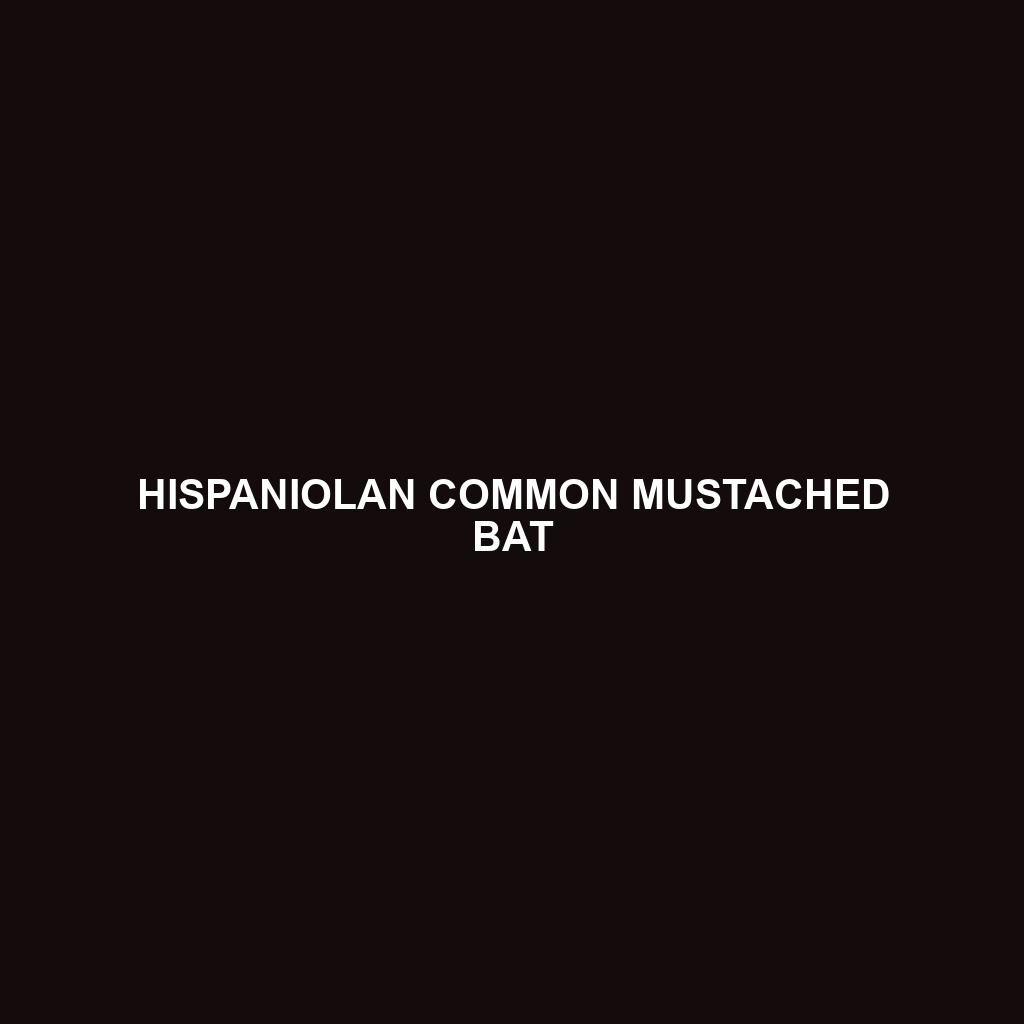Species Description: Dobson’s Lesser Mustached Bat
Common Name: Dobson’s Lesser Mustached Bat
Scientific Name:
Habitat
Dobson’s Lesser Mustached Bat is primarily found in the tropical and subtropical forests of Central and South America. Its geographic distribution includes regions of Colombia, Ecuador, and parts of the Amazon rainforest. This bat species thrives in environments that offer a rich diversity of flora and fauna, which is essential for its foraging and roosting needs.
Physical Characteristics
This medium-sized bat typically measures about 10 to 12 cm in body length, with a wingspan that can reach up to 30 cm. The fur of Dobson’s Lesser Mustached Bat is generally dark brown to black, with lighter underparts. A notable characteristic is its unique mustache-like facial hairs which can help in sensing the environment. Its large, rounded ears are adapted for echolocation, allowing it to navigate skillfully in low-light conditions.
Behavior
Dobson’s Lesser Mustached Bat is known for its nocturnal habits, often emerging in search of food at dusk. These bats are social creatures, typically roosting in small colonies in caves, tree hollows, or abandoned buildings. They exhibit fascinating flight patterns, allowing them to catch insects mid-air. Their agile movements and use of echolocation make them proficient hunters in their habitat.
Diet
The diet of Dobson’s Lesser Mustached Bat primarily consists of insects, including moths, beetles, and other flying insects. They are known to forage in the understory and canopy layers of their habitat, using echolocation to detect prey. This insectivorous diet plays a critical role in controlling insect populations within their ecosystem.
Reproduction
Breeding for Dobson’s Lesser Mustached Bat typically occurs during the wet season, usually between late spring and early summer. Female bats give birth to one or two pups after a gestation period of approximately two months. Maternal care is prominent, with mothers nursing and roosting with their young until they are capable of flight and foraging independently.
Conservation Status
Currently, the Dobson’s Lesser Mustached Bat is classified as ‘Vulnerable’ on the IUCN Red List due to habitat loss from deforestation and human encroachment. Conservation efforts are necessary to protect this species and its habitat from further degradation.
Interesting Facts
One fascinating fact about Dobson’s Lesser Mustached Bat is its exceptional hearing ability, which allows it to navigate densely vegetated areas efficiently. Additionally, these bats have been observed to engage in social grooming behavior, strengthening bonds within their colonies.
Role in Ecosystem
Dobson’s Lesser Mustached Bat plays a crucial role in its ecosystem as a natural pest controller. By consuming large quantities of insects, it helps maintain the balance of insect populations, thereby contributing to the health of the forest environment. Furthermore, bats like this species are essential for pollination and seed dispersal, enhancing biodiversity.
